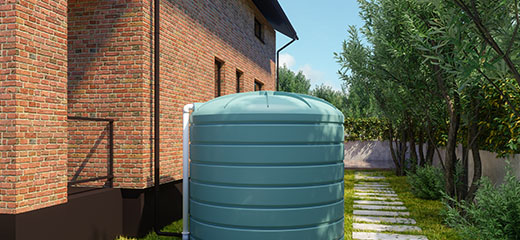
Reduce water wastage with a pool backwash tank
Having a pool is one of the best ways for families to bond and enjoy the outdoors during South Africa’s hot summers, but it also adds to the water bill. We look at what you need to know about backwashing your pool and how you can save money with a backwash water tank.
South Africa is likely to continue to experience water shortages due to climate change, aging infrastructure and loadshedding. The return of El Nino weather patterns means we can expect to see extremely hot weather and lower rainfall for a year or two and water shortages and restrictions are bound to follow.
Households are identifying ways to reduce wastage, with high water consumers – such as pools – being at the top of the list to manage the water in their homes.
Backwashing is the process of emptying a pool’s clogged filter. It does this by reversing the flow of water on your pool through the filter to remove any debris, build up or contaminants. Pools generally require weekly backwashing, although this will be less in winter months when the pool is not used as often.
How to save money with a backwashing tank
A backwash tank will help reduce these costs by reusing the pool backwash water. Like a rainwater tank, a backwash tank is designed to store water for later use. This tank is specially configured to collect wastewater from a pool for treatment purposes so it can be returned to the pool again.
During the backwash cycle, the dirty water from the pool is sent to the tank to stand so the solids can settle at the bottom. Once done the clean water, which is at the top of the tank is filtered and returned to the swimming pool, while the dirty water remains at the bottom to be used for gardening purposes via a tap at the bottom of the tank.
The backwash tank is 90% effective in reducing the waste of water that happens when you backwash a pool. Another great benefit is that the water you are returning to your pool has already benefited from your weekly chemical treatments resulting in lower maintenance costs.
The installation of the tank requires an expert who will install the tank at a suitable place within your garden. The expert installer will also provide information on which size would be best for your pool, how close the tank needs to be to the pool pump and recommend the best surface for it.
To save even more money, you could choose a tank which also allows for the collection for rainwater. Place the tank close to a gutter system so it can capture some of the rainwater to be used in the pool.
The best way to deal with the water shortages and restrictions as a homeowner with a pool is to find effective and cost saving ways such as using a backwash tank to make your home more water conservative. The long-term savings of these devices, far outweigh the initial set up costs and is one of the best ways to enjoy your swimming pool without worrying about your water bill.
LookSee is a free home efficiency platform aimed at making homeownership easier and more affordable.









